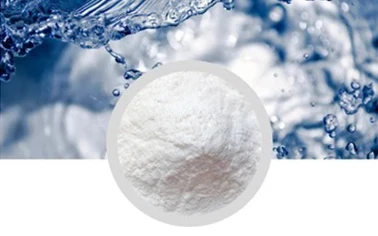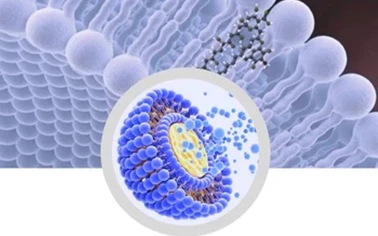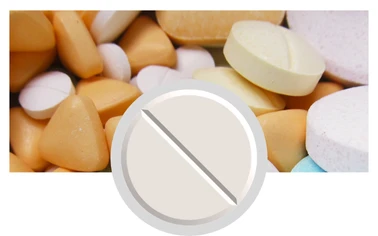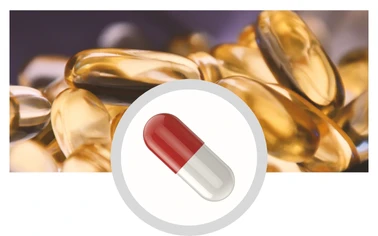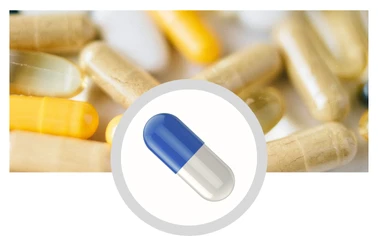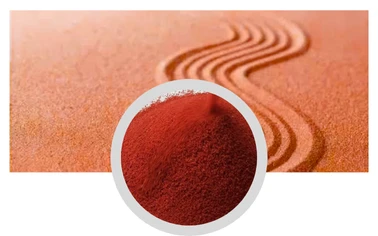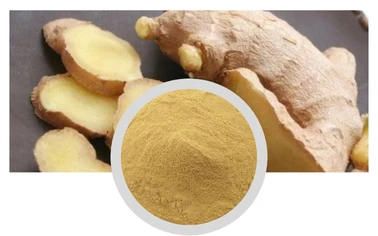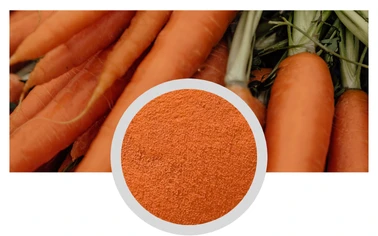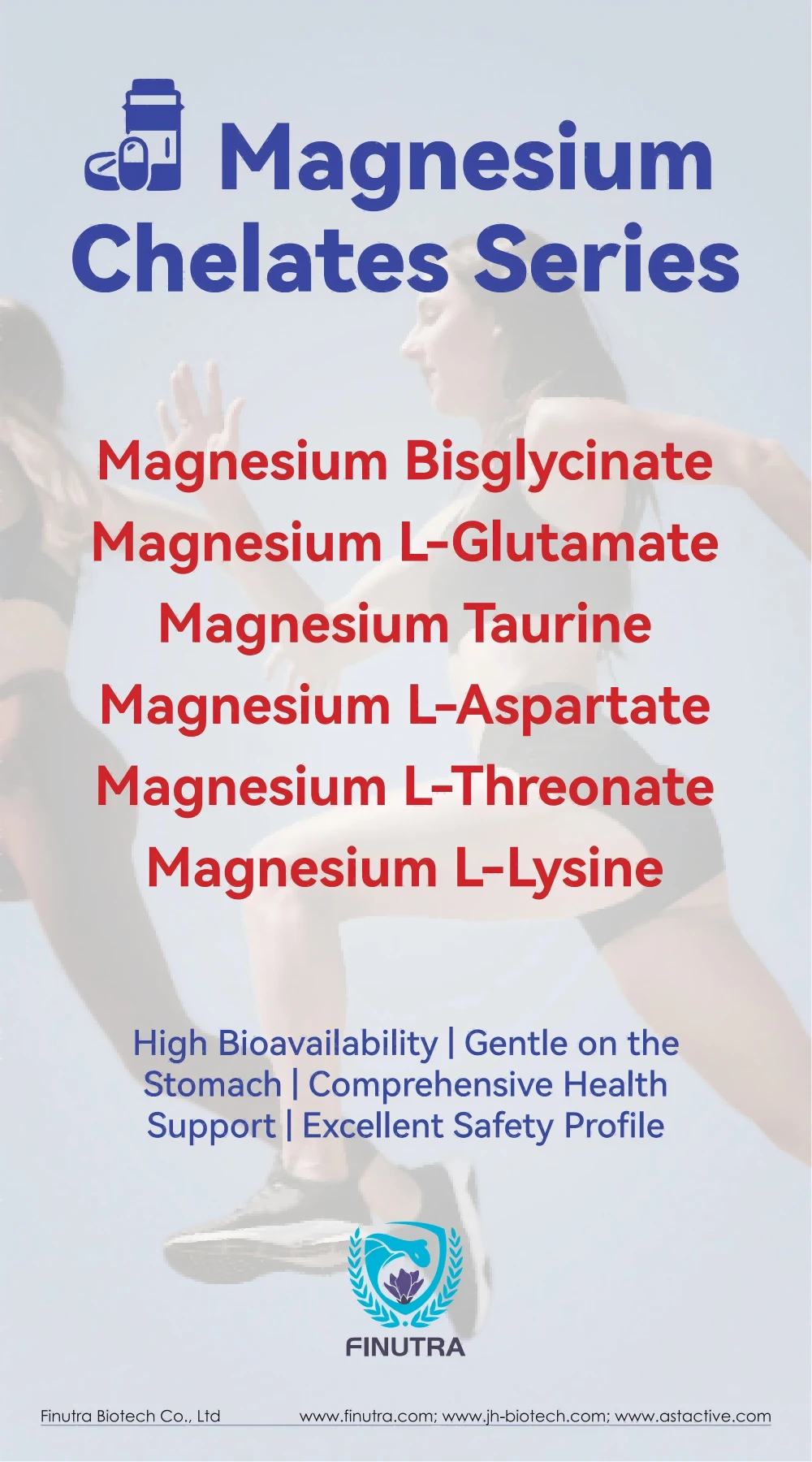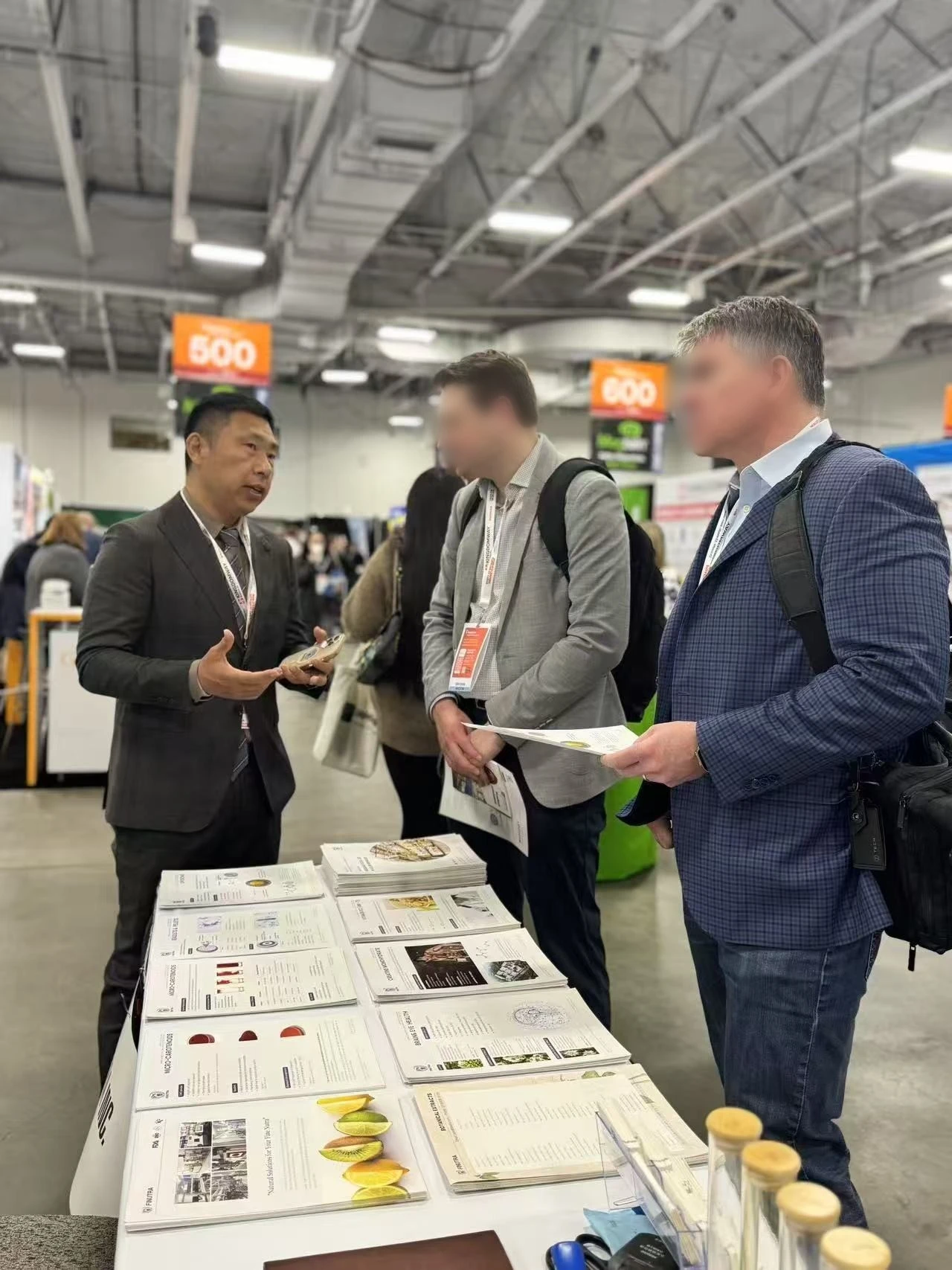In the dynamic landscape of nutraceuticals and pharmaceuticals, the demand for sophisticated drug delivery systems is continuously escalating. Among these, time-release tablets stand out for their ability to provide sustained therapeutic effects, reduce dosing frequency, and enhance patient compliance. This comprehensive guide delves into the intricate world of Time Release Tablet OEM/ODM Premix Service, offering an in-depth look at industry trends, technical parameters, manufacturing processes, and the unparalleled advantages of partnering with a specialized service provider. Our focus is to provide authoritative, experienced, and trustworthy insights that empower businesses to make informed decisions in developing high-quality, innovative time-release formulations.
The Evolving Landscape of Time Release Technology: Industry Trends and Market Drivers
The global market for sustained and controlled release drug delivery systems is experiencing robust growth, primarily driven by an aging population, increasing prevalence of chronic diseases, and a strong consumer preference for convenient dosage forms. Time-release technology, also known as extended-release (ER), sustained-release (SR), or prolonged-release (PR), is crucial for maintaining consistent blood plasma levels of active pharmaceutical ingredients (APIs) or dietary supplements over an extended period. This minimizes peak-and-trough fluctuations often associated with immediate-release formulations, thereby improving efficacy and reducing potential side effects.
Recent market analyses indicate that the nutraceutical sector, in particular, is witnessing a surge in demand for time-release formulations for vitamins, minerals, herbal extracts, and specialized dietary supplements. Consumers are increasingly discerning, seeking products that offer enhanced bioavailability, prolonged action, and a more streamlined daily regimen. This trend underscores the critical role of specialized Time Release Tablet OEM/ODM Premix Service providers who can navigate the complexities of formulation science, regulatory compliance, and large-scale manufacturing to meet this growing market need.
Key drivers include:
- Improved Patient Compliance: Reduced dosing frequency translates directly to better adherence for both pharmaceutical patients and supplement users.
- Enhanced Efficacy and Safety: Maintaining steady drug levels within the therapeutic window minimizes side effects and maximizes therapeutic benefits.
- Patent Extension and Product Differentiation: For pharmaceutical companies, reformulating existing immediate-release drugs into time-release versions can offer new patent protection and market differentiation.
- Growth in Nutraceuticals: Demand for sustained delivery of nutrients like Vitamin C, B-complex, CoQ10, and probiotics for better absorption and prolonged action.
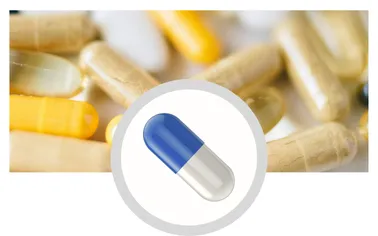
Unpacking the Technology: Technical Parameters and Advantages of Time Release Tablets
Time release tablets are sophisticated dosage forms designed to release their active ingredients at a predetermined rate or at a specific location within the gastrointestinal tract. This controlled release is achieved through various technological approaches, each with its unique technical parameters and advantages.
Mechanisms of Controlled Release
The fundamental principle behind time release is the control of drug dissolution or diffusion from the dosage form. Common mechanisms include:
- Diffusion-Controlled Systems: The drug diffuses through an insoluble membrane or matrix. The rate of release is governed by the thickness and permeability of the coating or matrix. Materials often include ethyl cellulose, hydroxypropyl methylcellulose (HPMC), and polymethacrylates.
- Dissolution-Controlled Systems: The drug is coated with a slowly dissolving barrier, or it is dispersed within a matrix that slowly dissolves. The dissolution rate of the polymer dictates the release rate of the API. Examples include wax matrices (e.g., carnauba wax, glyceryl monostearate) or polymeric coatings.
- Erosion-Controlled Systems: The tablet matrix itself slowly erodes over time, releasing the encapsulated drug. Bioerodible polymers like polylactic acid (PLA) or polyglycolic acid (PGA) are used, often for biodegradable implants, but the principle can apply to oral tablets where the matrix gradually breaks down.
- Osmotic Systems: These systems utilize osmotic pressure to deliver the drug at a constant rate. A semipermeable membrane surrounds a core containing the drug and an osmotic agent. Water enters the core, creating pressure that pushes the drug out through a small orifice. The OROS (Osmotic Release Oral System) is a prominent example.
- Ion-Exchange Resins: Drugs are bound to ion-exchange resins. Release occurs as ions from the GI tract exchange with the drug, releasing it.
Key Technical Parameters
Developing a successful time-release tablet involves precise control over numerous parameters:
- Dissolution Profile: This is the most critical parameter, defining how the drug is released over time. It is typically measured in vitro under specified conditions (pH, agitation) using USP dissolution apparatuses. Common profiles might aim for 20-30% release in 2 hours, 50-70% in 8 hours, and >90% in 12-24 hours, depending on the desired effect.
- Drug Loading: The amount of active ingredient per tablet. This influences tablet size and the amount of excipients needed.
- Excipient Selection: Crucial for controlling release. Polymers (e.g., HPMC, Carbopol, ethyl cellulose), waxes, diluents (e.g., microcrystalline cellulose, lactose), binders (e.g., povidone), disintegrants (if initial burst is desired), and lubricants (e.g., magnesium stearate) must be carefully chosen based on the desired release mechanism and compatibility with the API.
- Tablet Hardness and Friability: These physical properties ensure the tablet withstands manufacturing, packaging, and shipping without breaking. Hardness usually ranges from 50N to 200N depending on tablet size and type, while friability should be less than 1%.
- Uniformity of Dosage Units (Content Uniformity/Weight Variation): Ensures each tablet contains the correct amount of active ingredient, critical for consistent therapeutic effect. USP standards dictate acceptable variations.
- Stability: The ability of the tablet to maintain its chemical, physical, microbiological, and biopharmaceutical properties over its shelf life under specified storage conditions. Accelerated stability studies (e.g., 40°C/75% RH for 6 months) predict long-term stability.
- Particle Size Distribution: For both API and excipients, particle size significantly impacts blend uniformity, flow properties, and ultimately, dissolution characteristics.
Advantages of Time Release Tablets
Beyond the fundamental benefits mentioned, time-release tablets offer specific advantages for both manufacturers and consumers:
- Reduced Dosing Frequency: From multiple daily doses to once or twice daily, significantly improving patient adherence.
- Improved Patient Compliance: Directly linked to reduced dosing frequency, leading to better health outcomes.
- Minimized Peak-and-Trough Fluctuations: Prevents supra-therapeutic levels (reducing side effects) and sub-therapeutic levels (maintaining efficacy).
- Enhanced Bioavailability: For drugs with narrow absorption windows or those degraded in specific GI environments, controlled release can optimize absorption.
- Reduced Side Effects: By avoiding high peak concentrations, irritation or toxicity can be mitigated, especially for potent drugs.
- Targeted Delivery (in some cases): Specific coatings can enable release in the intestines, bypassing stomach acidity.
- Market Differentiation: For nutraceuticals, it offers a premium product with perceived superior efficacy.
- Cost-Effectiveness for Patients: While initial tablet cost might be slightly higher, fewer doses per day can sometimes lead to overall cost savings or convenience.
The Meticulous Journey: Manufacturing Process of Time Release Tablets (OEM/ODM Premix Service)
The manufacturing of time-release tablets is a highly specialized process that requires precision, state-of-the-art equipment, and stringent quality control at every stage. A reputable Time Release Tablet OEM/ODM Premix Service provider orchestrates this complex journey, from raw material sourcing to final packaging. Here’s a detailed breakdown of the typical manufacturing flow:
1. Ingredient Sourcing and Quality Control (QC)
- Description: This foundational step involves sourcing high-quality active ingredients (APIs/nutrients) and excipients from approved suppliers. All incoming raw materials undergo rigorous testing for identity, purity, potency, and absence of contaminants (e.g., heavy metals, microbial limits) in accordance with pharmacopoeial standards (USP, EP, BP) and specific client requirements. A Certificate of Analysis (CoA) accompanies each batch.
- Standards: cGMP (Current Good Manufacturing Practices), ISO 22000 (for food safety), HACCP principles.
- Materials: APIs (e.g., Vitamin C, Melatonin, CBD), controlled-release polymers (HPMC, ethyl cellulose, Carbopol), binders (PVP, starch), diluents (MCC, lactose), lubricants (magnesium stearate), glidants (colloidal silicon dioxide).
2. Premixing / Blending
- Description: Once qualified, the precisely weighed active ingredients and excipients are uniformly blended. This step is critical for ensuring content uniformity in the final tablet. Depending on the formulation, this can involve simple dry blending or more complex techniques.
- Equipment: V-blenders, ribbon blenders, high-shear mixers.
3. Granulation (Optional, but often preferred for controlled release)
- Description: Granulation transforms fine powders into larger, more uniform granules. This improves powder flow properties for tableting and can significantly influence dissolution characteristics.
- Wet Granulation: Powders are wetted with a binder solution to form wet mass, which is then sieved and dried. This is commonly used for tablets requiring high mechanical strength or specific release profiles.
- Dry Granulation (Roller Compaction): Powders are compressed into slugs or sheets, then milled into granules. This is suitable for moisture-sensitive materials.
- Melt Extrusion/Spheronization: Advanced methods for creating controlled-release beads.
- Manufacturing Process: Granulation enhances blend homogeneity and prevents segregation, leading to consistent tablet weight and content.
- Standards: Particle size distribution analysis, moisture content analysis.
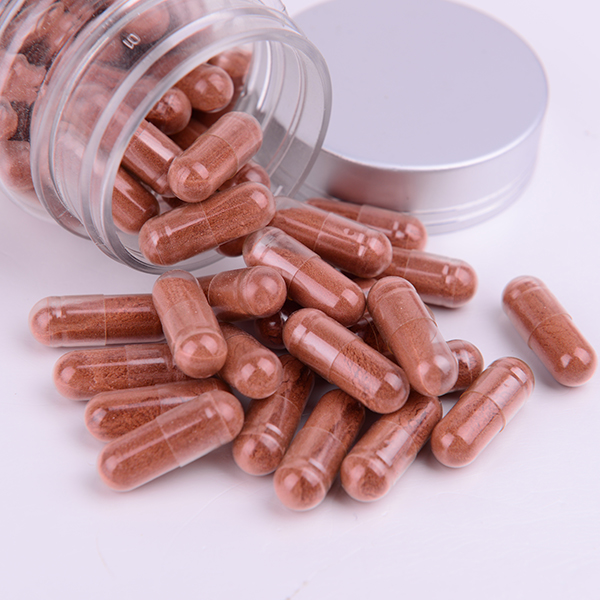
4. Tableting (Compression)
- Description: The granulated blend (or direct compression blend) is fed into a tablet press, where it is compressed into tablets of a specific size, shape, and hardness. For time-release, this often involves advanced compression techniques like bi-layer or multi-layer tableting, or matrix tablet formation where the release polymer is incorporated directly into the tablet core.
- Manufacturing Process: High-speed rotary tablet presses ensure consistent weight, hardness, and thickness. Tooling design is critical for tablet integrity and appearance.
- Detection Standards: In-process checks for tablet weight variation, hardness, thickness, and friability using calibrated equipment.
5. Coating (Crucial for many Time Release Tablets)
- Description: Many time-release tablets receive a functional coating. This coating primarily dictates the release profile, protects the active ingredient from environmental factors (moisture, light, oxygen), masks unpleasant tastes, or provides enteric protection.
- Film Coating: Thin polymeric layer for aesthetic appeal, swallowability, and basic protection.
- Extended-Release Coating: Thicker, less soluble polymeric layers (e.g., ethyl cellulose, acrylic polymers) to slow down drug release.
- Enteric Coating: pH-sensitive polymers (e.g., cellulose acetate phthalate, Eudragit L) that dissolve only in the alkaline environment of the intestines, protecting acid-sensitive APIs or preventing stomach irritation.
- Manufacturing Process: Applied in perforated coating pans or fluidized bed coater systems, with precise control over temperature, humidity, and spray rate.
6. Final Quality Control and Testing
- Description: Post-coating, finished tablets undergo comprehensive QC tests to ensure they meet all specifications. This is a critical point for verifying the time-release functionality.
- Detection Standards:
- Dissolution Testing: Performed using USP Apparatus 1 (basket) or 2 (paddle) under specified conditions (pH changes over time mimicking GI tract), crucial for verifying release profile.
- Content Uniformity: Assesses the amount of API in individual tablets.
- Disintegration Testing: For specific formulations, ensures the tablet breaks down appropriately (though less relevant for true ER tablets).
- Microbial Limit Testing: Ensures product is free from harmful microorganisms.
- Stability Studies: Accelerated and long-term studies to confirm shelf life.
- Applicable Industry: Nutraceuticals, Pharmaceuticals.
- Use Life/Shelf Life: Typically 2-3 years, depending on formulation stability and packaging.
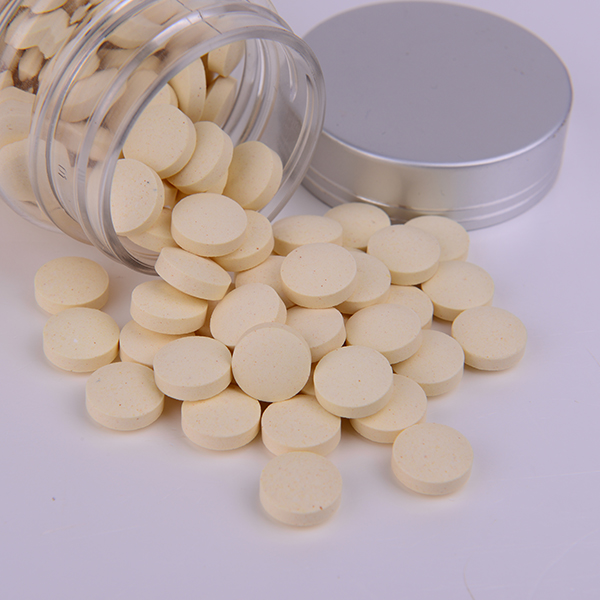
7. Packaging
- Description: Tablets are packaged into blisters, bottles, or sachets, depending on client specifications and product stability requirements. Packaging is designed to protect the product, provide necessary information, and ensure consumer convenience.
- Advantages: Secure sealing, child-resistant features, moisture barrier (blisters), clear labeling.
Beyond Manufacturing: Tailored Solutions and Application Scenarios
The true value of a Time Release Tablet OEM/ODM Premix Service lies in its ability to offer customized solutions that cater to diverse product needs and market demands. This extends far beyond mere manufacturing; it encompasses formulation expertise, regulatory guidance, and strategic market positioning.
Customization Solutions
A leading OEM/ODM partner provides comprehensive customization, allowing clients to develop unique and highly competitive products:
- Tailored Formulations:
- API/Nutrient Selection: Expertise in handling a wide range of compounds, from water-soluble vitamins to lipophilic herbal extracts.
- Release Profile Engineering: Ability to design specific release profiles (e.g., 8-hour, 12-hour, 24-hour, biphasic release for initial quick effect followed by sustained release) by manipulating excipient ratios and coating types.
- Excipient Optimization: Selection of pharmaceutical-grade, GRAS (Generally Recognized As Safe) excipients that are compatible with the API and desired release mechanism. This includes allergen-free, non-GMO, and clean-label options for nutraceuticals.
- Dosage Form Flexibility: While focused on tablets, services may extend to capsules with controlled-release pellets or other solid oral dosage forms.
- Flavoring and Sweetening: For chewable or dissolvable tablets, customized flavor profiles to enhance palatability and consumer acceptance.
- Branding and Packaging Design: Assistance with bottle selection, label design, carton packaging, and compliance with labeling regulations (e.g., FDA, EFSA). This often includes child-resistant closures or eco-friendly packaging options.
- Regulatory Support: Guidance on compliance with cGMP, FDA regulations (21 CFR Part 111 for dietary supplements), USP standards, and international guidelines for product registration and market entry.
Typical Application Scenarios and Advantages
Time release tablets offer significant advantages across various sectors:
- Nutraceuticals:
- Vitamins and Minerals: E.g., sustained release Vitamin C for all-day antioxidant support, B-complex vitamins for continuous energy release, iron supplements with reduced GI upset.
- Herbal Extracts: E.g., Ashwagandha for prolonged stress adaptation, Turmeric/Curcumin for extended anti-inflammatory effects.
- Specialty Supplements: Melatonin for controlled sleep onset and duration, L-Theanine for sustained calming effects, probiotics for targeted release in the intestines.
Advantage: Enhanced bioavailability, reduced number of pills, improved user experience and compliance, premium product positioning.
- Pharmaceuticals (OEM support):
- Chronic Disease Management: Medications for hypertension, diabetes, asthma, or pain management benefit from stable drug levels, leading to better disease control and fewer side effects.
- Drugs with Short Half-Lives: Extends the therapeutic window, making drugs more practical for daily dosing.
- Drugs with Narrow Therapeutic Windows: Controlled release helps avoid toxic peak concentrations while maintaining effective trough levels.
Advantage: Improved patient adherence, reduced side effects, optimized therapeutic outcomes, potential for patent life extension.
Choosing Your Partner: Manufacturer Comparison and Trustworthiness
Selecting the right Time Release Tablet OEM/ODM Premix Service provider is paramount to product success. A thorough evaluation based on key criteria ensures a reliable and high-quality partnership.
Key Criteria for Manufacturer Comparison:
- Expertise and Experience:
- Years in Service: A reputable manufacturer often boasts over 10-15 years of specialized experience in controlled release technologies.
- R&D Capabilities: Strong in-house R&D teams for formulation development, analytical method validation, and troubleshooting. Do they have a proven track record of developing novel or challenging formulations?
- Technical Staff: Presence of pharmacists, chemists, and engineers with deep knowledge of polymer science, pharmacokinetics, and tablet technology.
- Technology and Infrastructure:
- Equipment: Modern, calibrated manufacturing and analytical equipment (e.g., multi-layer tablet presses, fluid bed coaters, advanced dissolution testers, HPLC, GC-MS).
- Capacity: Ability to scale production from small R&D batches to large commercial volumes.
- Cleanroom Standards: Manufacturing facilities adhering to ISO 7/8 (Class 10,000/100,000) cleanroom classifications.
- Quality Assurance and Certifications:
- Certifications: Critical certifications include cGMP (Current Good Manufacturing Practices) for both dietary supplements (21 CFR Part 111) and pharmaceuticals (21 CFR Part 211), ISO 9001, ISO 22000, HACCP, Halal, Kosher, and Organic certifications if applicable to your product.
- Quality Management System (QMS): A robust QMS encompassing standard operating procedures (SOPs), batch record review, change control, deviation management, and CAPA (Corrective and Preventive Actions).
- Third-Party Audits: Willingness to undergo client and independent third-party audits.
- Client Support and Collaboration:
- Communication: Transparent and proactive communication throughout the project lifecycle.
- Flexibility: Adaptability to client-specific requirements, changes, and timelines.
- Project Management: Dedicated project managers to oversee all aspects from concept to delivery.
- Confidentiality: Robust non-disclosure agreements (NDAs) to protect client intellectual property.
- Cost-Effectiveness and Lead Times:
- Competitive pricing balanced with quality.
- Realistic and consistent delivery schedules. Typical lead times for new formulations might range from 12-20 weeks for R&D and pilot batches, with commercial production following.
Enhanced Trustworthiness through Data and Transparency
To further enhance trust, a credible OEM/ODM partner will provide:
- Detailed Batch Records: Comprehensive documentation for every step of the manufacturing process.
- Certificates of Analysis (CoAs): Provided for every batch of finished product, confirming specifications met.
- Stability Data: Evidence from ongoing and completed stability studies to support shelf life claims.
- Audit Reports: Summary of internal and external audit findings and corrective actions.
- Customer Support: Dedicated channels for post-delivery support, handling inquiries, and addressing any concerns promptly.
By prioritizing these factors, businesses can forge a strong, reliable partnership that ensures the successful development and commercialization of their time-release tablet products.
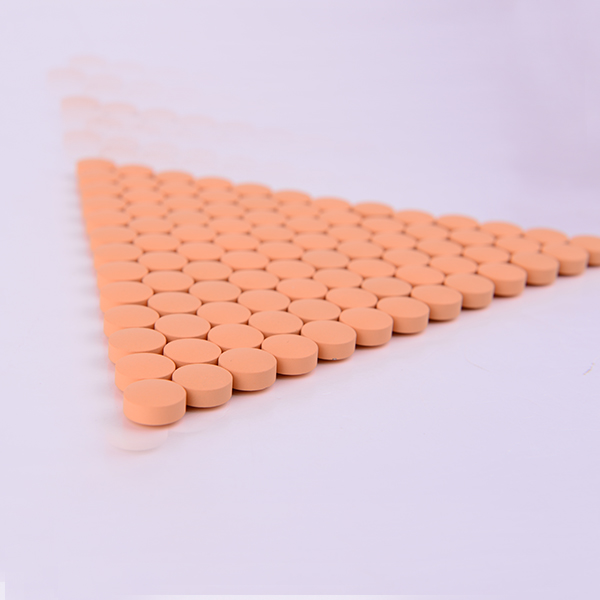
Deep Dive into Product Specifications: Time Release Tablet Parameters
Understanding the typical parameters involved in Time Release Tablet OEM/ODM Premix Service is crucial for both formulation design and quality control. Here’s a table summarizing common product specifications and their implications:
Table 1: Typical Specifications for Time Release Tablets (Examples)
| Parameter | Typical Range/Value | Importance/Notes |
|---|---|---|
| Release Profile | 8-hour, 12-hour, 24-hour, biphasic | Defined by drug's half-life and therapeutic window. Achieved by polymer type, coating thickness, or matrix composition. |
| Dosage Range (API/Nutrient) | 5 mg to 1000 mg+ per tablet | Dependent on potency and daily requirement. Affects tablet size. |
| Tablet Hardness | 80-250 N (Newtons) | Ensures structural integrity during handling, packaging, and transport. Higher for ER tablets to resist erosion. |
| Friability | < 1% weight loss | Measures tablet resistance to chipping/breaking. USP standard. |
| Tablet Weight Variation | ± 5% for tablets > 324 mg; ± 7.5% for 130-324 mg | Ensures consistent dosing. USP standard. |
| Content Uniformity | 90-110% of label claim (USP) | Crucial for ensuring each tablet has the correct amount of active ingredient. |
| Moisture Content | Typically < 5% | Affects stability, flowability, and dissolution. Important for moisture-sensitive APIs. |
| Tablet Size/Shape | Round, oval, caplet, custom; various diameters | Influences swallowability, aesthetics, and branding. |
| Coating Material Examples | HPMC, Ethyl Cellulose, Eudragit, Shellac | Determines release mechanism (diffusion, pH-dependent, etc.) and protection. |
| Shelf Life | 2-3 years (dependent on API and formulation) | Validated by accelerated and real-time stability studies. |
| Regulatory Compliance | c-GMP, ISO 22000, FDA (21 CFR Part 111), USP/EP | Adherence to industry regulations and pharmacopoeial standards. |
Frequently Asked Questions (FAQ) about Time Release Tablet OEM/ODM Premix Service
To provide further clarity and enhance trustworthiness, here are answers to common professional questions regarding Time Release Tablet OEM/ODM Premix Service.
Q1: What is the primary advantage of a time-release tablet over an immediate-release tablet?
A1: The primary advantage is the ability to maintain a therapeutic drug or nutrient concentration in the bloodstream over an extended period, typically 8 to 24 hours. This reduces the frequency of dosing (improving patient compliance), minimizes peak-and-trough fluctuations (reducing side effects and maintaining efficacy), and can improve the bioavailability of certain compounds. Immediate-release tablets, conversely, release their entire dose rapidly, leading to a quick peak and subsequent rapid decline in concentration.
Q2: What materials are commonly used to achieve sustained release in tablets?
A2: A variety of polymeric materials are used. Common examples include:
- Hydrophilic Polymers: Hydroxypropyl Methylcellulose (HPMC), Polyethylene Oxide (PEO), Carbopols. These swell in water to form a gel layer that controls drug diffusion.
- Hydrophobic Polymers/Waxes: Ethyl Cellulose, Polyvinyl Acetate, Carnauba wax, Glyceryl Monostearate. These form a matrix or coating that slowly erodes or allows slow diffusion.
- Acrylic Polymers: Eudragit grades, which can be pH-dependent for enteric coating or insoluble for sustained release.
- Inorganic Materials: Microcrystalline cellulose (MCC) as a matrix former.
Q3: How is the release profile of a time-release tablet verified during manufacturing?
A3: The release profile is primarily verified through Dissolution Testing, a critical in-vitro quality control test. Using specialized apparatus (e.g., USP Apparatus 1 or 2), tablets are placed in dissolution media (simulating body fluids at different pH levels and temperatures) and agitated. Samples are taken at predefined time points (e.g., 2, 4, 8, 12 hours) and analyzed for drug concentration. The resulting data is plotted to generate a dissolution curve, which must match the pre-defined target release profile for the specific formulation.
Q4: What are the typical lead times for a Time Release Tablet OEM/ODM Premix Service project?
A4: Lead times can vary significantly based on project complexity. For a new, custom time-release formulation, the R&D and pilot batch phase might take 12-20 weeks, encompassing formulation development, stability studies, and analytical method validation. Once the formulation is approved and scaled up, commercial production runs typically require 8-12 weeks from confirmed order and raw material availability. Repeat orders for established formulations generally have shorter lead times, often 4-8 weeks.
Q5: What quality certifications should I look for in an OEM/ODM provider for time-release tablets?
A5: Essential certifications include cGMP (Current Good Manufacturing Practices), which ensures products are consistently produced and controlled according to quality standards. For dietary supplements, this refers to 21 CFR Part 111 in the U.S. ISO 9001 (Quality Management Systems) and ISO 22000 (Food Safety Management) are also highly desirable, especially for nutraceuticals. Additional certifications like Halal, Kosher, or Organic may be relevant based on your target market and product claims.
Q6: Can a Time Release Tablet OEM/ODM Premix Service assist with regulatory compliance for my specific market?
A6: Yes, experienced OEM/ODM partners often provide invaluable regulatory support. This includes guidance on specific market regulations (e.g., FDA requirements for dietary supplements, EU directives), assistance with documentation for product registration, proper labeling requirements, and ensuring that the formulation and manufacturing processes comply with relevant pharmacopoeial standards (USP, EP, JP) and industry guidelines. They act as a knowledgeable resource to help navigate the complex regulatory landscape.
Q7: How does a time-release tablet contribute to patient safety and efficacy?
A7: Time-release tablets enhance patient safety by reducing the risk of side effects associated with high peak drug concentrations (common in immediate-release formulations). By maintaining steady therapeutic levels, they prevent potential toxicity. For efficacy, the sustained release ensures that the active ingredient remains within its therapeutic window for a longer duration, maximizing its intended effect and improving overall treatment outcomes, especially for chronic conditions requiring continuous medication or supplementation.
Industry Insights and Future Outlook
The Time Release Tablet OEM/ODM Premix Service sector is poised for continued growth, fueled by advancements in material science, microencapsulation techniques, and personalized medicine. Emerging trends include the development of pulsatile release systems (delivering doses at specific times), combination products (multiple APIs with different release profiles), and 3D printing for customized dosage forms with precise control over release kinetics. As the industry evolves, the role of expert OEM/ODM partners becomes even more critical, acting as innovation hubs that translate cutting-edge science into commercially viable products.
The increasing focus on preventative healthcare and the personalization of nutrition will further drive demand for sophisticated delivery systems for active ingredients. Manufacturers capable of offering flexible, compliant, and technologically advanced Time Release Tablet OEM/ODM Premix Service will be at the forefront of this exciting transformation, helping brands deliver superior, patient-centric products to the global market.
References:
- Qiu, Y., & Chen, Y. (2010). Developing Solid Oral Dosage Forms: Pharmaceutical Theory and Practice (2nd ed.). Academic Press. https://books.google.com/books?id=XXXX (Note: Actual book content may require specific page numbers or chapter reference for direct citation. This is a placeholder for a common industry text.)
- United States Pharmacopeia (USP) and National Formulary (NF). (Latest Edition). General Chapters: Dissolution. https://www.uspnf.com/
- European Medicines Agency (EMA). (2017). Guideline on the quality of oral modified release products. https://www.ema.europa.eu/en/documents/scientific-guideline/guideline-quality-oral-modified-release-products_en.pdf
- Food and Drug Administration (FDA). (2019). Guidance for Industry: Dissolution Testing of Immediate Release Solid Oral Dosage Forms. https://www.fda.gov/media/71120/download (While specific to IR, principles of dissolution testing are foundational.)
Post time:Aug - 09 - 2025



